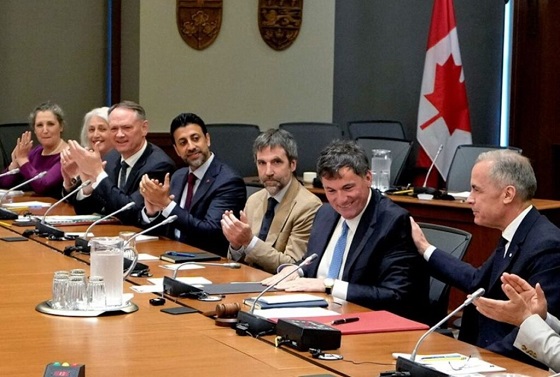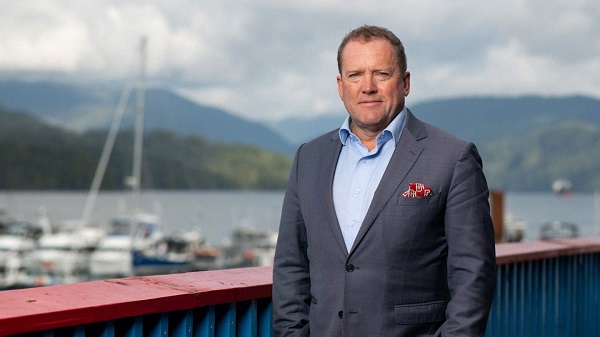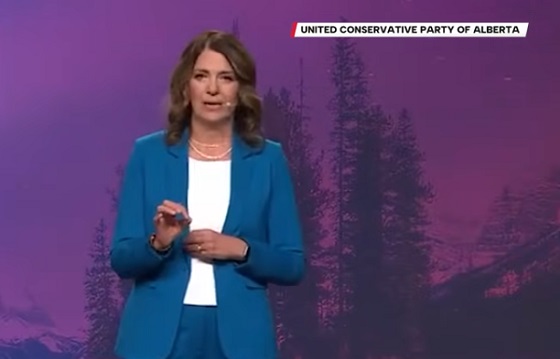Business
Navigating the country’s telecommunications landscape a tricky task: Peter Menzies

From the MacDonald Laurier Institute
By Peter Menzies
On the telecom side of things, the CRTC’s long-standing focus on the fundamental issues of access and affordability is far more tangible than the ethereal cultural ambitions that have swamped the broadcasting boat
Canada’s communications policy playing field is more uncertain today than it has been in decades.
The cause is primarily the Online Streaming Act (Bill C-11), which attempts to “modernize” the Broadcasting Act by defining all internet-based audio and visual content as “broadcasting.” Promoted by a series of heritage ministers as a simple matter of ensuring that streaming companies support Canadian content, the act has alarmed a thriving community of unregulated online creators while causing targeted offshore operators to question how they can continue operating in Canada.
Canadian Radio-television and Telecommunications Commission (CRTC) chair Vicky Eatrides, appointed last January, is clearly feeling pressure to implement Bill C-11 as quickly as possible. Following a series of rushed preliminary processes that made it challenging for many companies in the regulatory “rookie” category to participate, the CRTC’s first public hearing is scheduled for Nov. 20.
It involves 127 intervenors, is scheduled to last three weeks, and Eatrides hopes to have initial decisions made by the end of 2024.
With all her staff’s hands to the pumps on that file, Eatrides has shut down dealing with new licensing matters in the traditional broadcasting fields of television and radio for at least two years. All TV licences up for renewal this year were administratively renewed until 2025 (Bell has filed a court appeal). All of those expiring next year were renewed as is until 2026, and the radio industry was informed the CRTC won’t accept applications in that genre for at least two years, putting it in a regulatory cryo-chamber.
Meanwhile, active broadcasting files have been triaged to the extent that they are backed up, in some cases for years, leaving those involved without the decisions they need. The renewal of the CBC’s licence, for instance, remains incomplete 33 months after the CRTC’s public hearing into the matter.
On the telecommunications side, life is much more steady as she goes. Early in July, the CRTC laid out what it described as a more streamlined and flexible manner for determining wholesale access rates with the goal of fostering competition. But these matters are rarely dealt with swiftly, and incumbent companies affected by this new—and, to many, refreshing—approach have a long track record of being able to drag things out.
Competitor access rates is a matter that has preoccupied the CRTC for a decade; the rates have wavered back and forth since at least 2016, and the lack of regulatory certainty has had a debilitating impact on smaller service providers. The largest of those—TekSavvy—threw in the towel early this summer and put itself up for sale.
The management of so-called mobile virtual network operator rates, particularly relevant in the shadow of Quebecor’s purchase of Freedom Mobile, has moved along efficiently. This is another positive sign involving an area in which the CRTC is attempting to foster competition with increased regulatory certainty. When it comes to the telecom side of things, the regulator’s long-standing focus on the fundamental issues of access and affordability is, while complicated in terms of implementation, far more tangible than the ethereal cultural ambitions that have swamped the broadcasting boat.
Two other matters are worth watching.
The first—the CRTC’s role in overseeing negotiations as foreseen in the Online News Act—may evaporate. Meta has moved out of the business of carrying news in Canada, with disastrous consequences for those in the business of creating it. News Media Canada, the industry’s lobbying arm, is now asking the government to bow to Google’s demands before it does the same.
That could mean significant legislative amendments which could eliminate the CRTC’s role entirely. Seeing as the commission has already delayed decisions on which news organizations would qualify until late 2024, this would be a welcome relief.
The second will be whether the CRTC, when dealing with the likes of Disney and Netflix next month, realizes what’s at stake. The United States-based companies aren’t interested in contributing solely through official funds while all the commission appears to want to talk about is how much they should pay and to which funds.
Neither has threatened, as Meta and Google did with Bill C-18, to disconnect Canada if they don’t get the outcomes they need.
Not yet, anyway.
Peter Menzies is a senior fellow with the Macdonald-Laurier Institute, a former newspaper executive, and past vice-chair of the CRTC.
Business
Carney’s Toronto cabinet meetings cost $530,000

By Jen Hodgson
Prime Minister Mark Carney’s two-day cabinet meeting in Toronto cost taxpayers more than $532,000, records reviewed by the Canadian Taxpayers Federation show. Carney’s cabinet meetings cost thousands of dollars more than recent cabinet retreats hosted by former prime minister Justin Trudeau.
“If you’re spending thousands of dollars more than Trudeau on meetings, you’re spending too much money,” said Franco Terrazzano, CTF Federal Director. “It’s going to be hard for politicians to explain to taxpayers why all of the meeting rooms in Ottawa weren’t good enough.”
Carney’s two-day cabinet meeting was held at the Pan Pacific Toronto in September, according to government records submitted in response to an Order Paper Question. Pan Pacific’s website describes itself as a “luxury hotel.”
The Privy Council Office spent $250,400 on the venue and “hospitality,” $78,700 for audiovisual services, $40,000 for security and $8,073 on shipping. The PCO spent another $38,300 on accommodation, meals and transportation.
The total bill to taxpayers may balloon higher. The PCO noted costs only include expenditures processed as of Sept. 23. “Certain associated travel claims and invoices may still be awaiting submission or receipt,” wrote the PCO.
The Royal Canadian Mounted Police spent $29,000 on the cabinet meeting. That only includes expenditures processed as of Sept. 17.
The Translation Bureau charged taxpayers $30,600 for travel expenses, travel time and interpretation services.
Other departments also spent $57,400 for the cabinet meeting. Most of that was for transportation, but some ministers charged taxpayers for meals and accommodation for themselves and their staff.
Carney’s Toronto cabinet meeting cost more than recent cabinet meetings hosted by Trudeau.
Trudeau’s cabinet retreat to Charlottetown, P.E.I., in August 2023, cost taxpayers $485,196. Even after adjusting for inflation, Trudeau’s cabinet retreat cost about $26,000 less than Carney’s.
The Trudeau government also held a cabinet meeting in Vancouver in 2022. It cost taxpayers $471,070. Even after adjusting for inflation, Trudeau’s cabinet retreat cost about $25,000 less than Carney’s.
“Carney told Canadians he was going to cut waste and he should start by not dropping half a million bucks on meetings,” Terrazzano said. “We need a culture change in Ottawa and that needs to start with the prime minister and ministers respecting taxpayers’ hard-earned money.”
Business
Canada’s climate agenda hit business hard but barely cut emissions

This article supplied by Troy Media.
 By Gwyn Morgan
By Gwyn Morgan
Canada is paying a steep economic price for climate policies that have delivered little real environmental progress
In 2015, the newly elected Trudeau government signed the Paris Agreement. The following year saw the imposition of the Pan-Canadian Framework on Clean Growth and Climate Change, which included more than 50 measures aimed at “reducing carbon emissions and fostering clean technology solutions.” Key among them was economy-wide carbon “pricing,” Liberal-speak for taxes.
Other measures followed, culminating last December in the 2030 Emissions Reduction Plan, targeting emissions of 40 per cent below 2005 levels by 2030 and net-zero emissions by 2050. It included $9.1 billion for retrofitting structures, subsidizing zero-emission vehicles, building charging stations and subsidizing solar panels and windmills. It also mandated the phaseout of coal-fired power generation and proposed stringent emission standards for vehicles and buildings.
Other “green initiatives” included the “on-farm climate action fund,” a nationwide reforestation initiative to plant two billion trees, the “Green and Inclusive Community Buildings Program” to promote net-zero standards in new construction, and a “Green Municipal Fund” to support municipal decarbonization. That’s a staggering list of nation-impoverishing subsidies, taxes and restrictions.
Those climate measures come at a real cost to the industry that drives the nation’s economy.
The Trudeau government cancelled the Northern Gateway oil pipeline to the northwest coast, which had been approved by the Harper government, costing sponsors hundreds of millions of dollars in preconstruction expenditures. The political and regulatory morass the Liberals created eventually led to the cancellation of all but one of the 12 LNG export proposals.
Have all those taxes and regulatory measures reduced Canada’s fossil-fuel consumption? No. As Bjorn Lomborg has reported, between the election of the Trudeau government in 2015 through 2023, fossil fuels’ share of Canada’s energy supply increased from 75 to 77 per cent.
That dismal result wasn’t for lack of trying. The Fraser Institute has found that Ottawa and the four biggest provinces have either spent or forgone a mind-numbing $158 billion to create just 68,000 “clean” jobs, increasing the “green economy” by a minuscule 0.3 percentage points to 3.6 per cent of GDP at an eye-watering cost of more than $2.3 million per job.
That’s Canada’s emissions reduction debacle. What’s the global picture? A decade after Paris, 80 per cent of the world’s energy still comes from fossil fuels. World energy demand is up 150 per cent. Canada, which produces roughly 1.5 per cent of global emissions, cannot influence that trajectory. And, as Lomborg writes: “achieving net zero emissions by 2050 would require the removal of the equivalent of the combined emissions of China and the United States in each of the next five years. This puts us in the realm of science fiction.”
Does this mean our planet will become unlivable? A U.S. Department of Energy report issued in July is grounds for optimism. It finds that “claims of increased frequency or intensity of hurricanes, tornadoes, floods and droughts are not supported by U.S. historical data.” And it goes on: “CO2-induced warming appears to be less damaging economically than commonly believed and aggressive mitigation policies could be more detrimental than beneficial.”
U.S. Secretary of Energy Chris Wright responded to the report by saying: “Climate change is real … but it is not the greatest threat facing humanity … (I)mproving the human condition depends on access to reliable, affordable energy.”
That leaves no doubt as to where our largest trading partner stands on carbon emissions. But don’t expect Prime Minister Mark Carney, who helped launch the Glasgow Financial Alliance for Net Zero (GFANZ) at COP 26 in that city in 2021 and co-chaired it until this January, to soften his stand on carbon taxes. His just-released budget imposes carbon tax increases of $80 to $170 per ton by 2030 on our already struggling industries.
Doing so increases Canadian businesses’ competitive disadvantage with our most important trading partner while doing essentially nothing to help the environment.
Gwyn Morgan is a retired business leader who has been a director of five global corporations.
Troy Media empowers Canadian community news outlets by providing independent, insightful analysis and commentary. Our mission is to support local media in helping Canadians stay informed and engaged by delivering reliable content that strengthens community connections and deepens understanding across the country.
-

 National2 days ago
National2 days agoCanada Needs an Alternative to Carney’s One Man Show
-

 Alberta1 day ago
Alberta1 day agoThis new Canada–Alberta pipeline agreement will cost you more than you think
-

 Daily Caller2 days ago
Daily Caller2 days agoTech Mogul Gives $6 Billion To 25 Million Kids To Boost Trump Investment Accounts
-

 Business2 days ago
Business2 days agoCanada’s future prosperity runs through the northwest coast
-

 Energy1 day ago
Energy1 day agoUnceded is uncertain
-

 Automotive1 day ago
Automotive1 day agoPower Struggle: Governments start quietly backing away from EV mandates
-

 Business13 hours ago
Business13 hours agoCanada’s climate agenda hit business hard but barely cut emissions
-

 Alberta2 days ago
Alberta2 days agoAlberta will defend law-abiding gun owners who defend themselves




